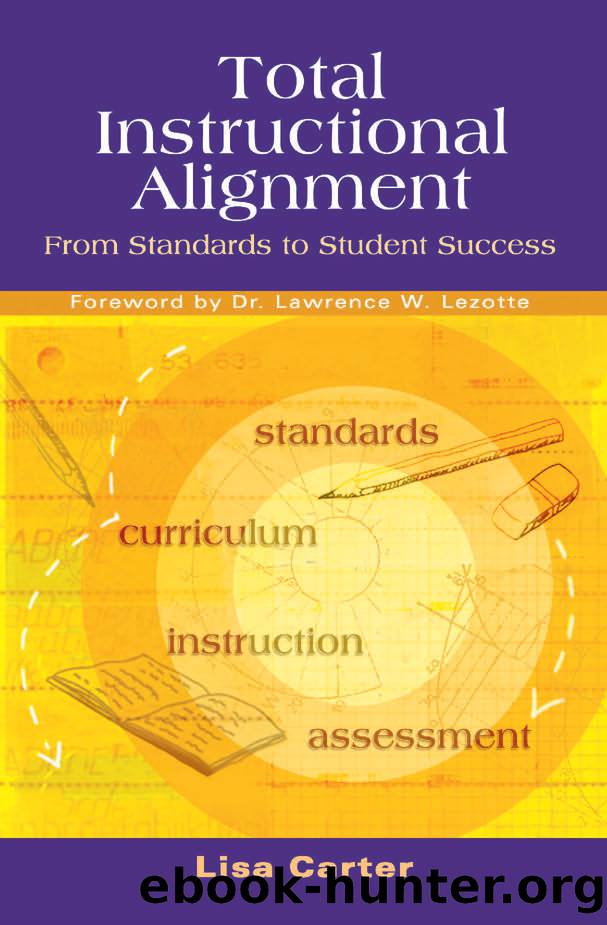Total Instructional Alignment by Carter Lisa;

Author:Carter, Lisa;
Language: eng
Format: epub
Publisher: Solution Tree
Published: 2007-08-15T00:00:00+00:00
Standards
So how do we make certain that there is alignment between what we teach and what we test? Published state standards alone are not always sufficient guides to curriculum alignment. Standards are often stated in vague or broad terms that can be left up to the individual teacher to translate. One teacherâs interpretation of the standard may be very different from the interpretation of the teacher in the room next door. Thus, these two teachers may be teaching very different things in response to the same standard. Even with attempts at further clarification, such as benchmarks or grade-level expectations, it still may be difficult for teachers to interpret exactly what they should be teaching in their classrooms.
Another problem appears when standards are not properly aligned from one grade level to the next. Skills should build both logically and sequentially from grade to grade and from course to course. If standards are vague, broad, or repetitious, the standards document might not provide clear guidance for alignment from one grade or course to the next. Benchmarks or learning objectives may be repeated from grade to grade without distinguishing how they are to change from one level to the next. I once encountered a curriculum document where the concept of main idea in reading comprehension was taught beginning in kindergarten and each year thereafter through grade 12. The guide simply stated that students should be able to determine the main idea of a given passage at each grade level. What is missing in such documents is how the concept of main idea should grow and develop in complexity. Without this guidance, the teacher can only guess how the standard should be handled at any given level.
What is needed is a format that enables teachers to clearly compare the alignment of standards, curriculum, and assessments that helps ensure that assessed skills are presented in a logical sequence for the individual learner. A helpful tool teachers can apply to do this comparison is the congruence matrix.
Download
This site does not store any files on its server. We only index and link to content provided by other sites. Please contact the content providers to delete copyright contents if any and email us, we'll remove relevant links or contents immediately.
The Art of Coaching Workbook by Elena Aguilar(50981)
Trainspotting by Irvine Welsh(21518)
Twilight of the Idols With the Antichrist and Ecce Homo by Friedrich Nietzsche(18501)
Fangirl by Rainbow Rowell(9095)
Periodization Training for Sports by Tudor Bompa(8170)
Change Your Questions, Change Your Life by Marilee Adams(7634)
This Is How You Lose Her by Junot Diaz(6792)
Asking the Right Questions: A Guide to Critical Thinking by M. Neil Browne & Stuart M. Keeley(5632)
Grit by Angela Duckworth(5517)
Red Sparrow by Jason Matthews(5390)
Paper Towns by Green John(5087)
Room 212 by Kate Stewart(5035)
Ken Follett - World without end by Ken Follett(4644)
Housekeeping by Marilynne Robinson(4341)
The Sports Rules Book by Human Kinetics(4290)
Double Down (Diary of a Wimpy Kid Book 11) by Jeff Kinney(4206)
Papillon (English) by Henri Charrière(4195)
The Motorcycle Diaries by Ernesto Che Guevara(4009)
Exercise Technique Manual for Resistance Training by National Strength & Conditioning Association(3955)
